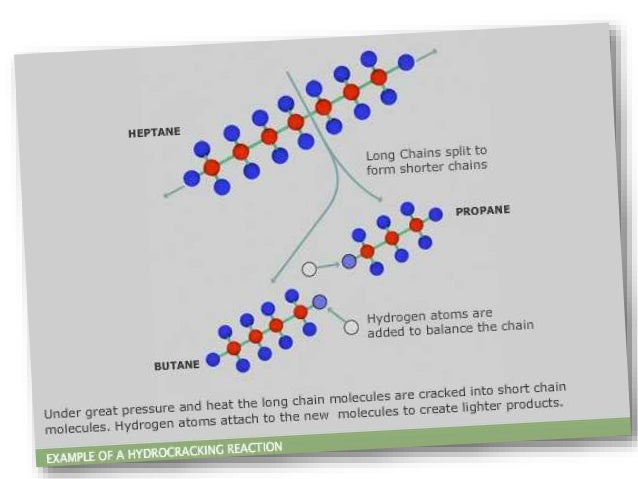In view of the advantages of mild hydrocracking process, it is essential to understand the process, catalysts used, reactions, kinetics, and advantages. This article reviews recent literature on MHC process, various catalysts used, reactions involved and advantages of mild hydrocracking process in terms of improved product qualities and increased distillates. The main advantage of zeolites is the molecular shape-selectivity exerted by the. Hydrocracking reactions were carried out in a fixed bed reactor with gas.
Hydrocracking is essentially the combination of two processes: hydrogenation and cracking. Therefore, hydrocracking utilizes a bifunctional catalyst. The catalysts (highly active noble metals used for hydrogenation e.g.
Pt and Pd) used in hydrocracking are very susceptible to poisoning and great care must be taken to remove sulfur from the feedstock. The process is typically accompanied by hydrotreating in order to remove heteroatom species (e.g. Additionally, while catalytic cracking is a carbon rejection process, hydrocracking is in a hydrogen addition process. Therefore, some complications from coking are avoided during the hydrocracking process. Several factors distinguish these two cracking processes; however, typically both processes are used in order to provide the most optimal yield of products in an economically efficient manner. The advantages of hydrocracking include its ability to handle a wide range of feedstock, as well as the selectivity of its distillates. The primary objective of both cracking processes is to produce lighter saturated hydrocarbons with reduced molecular weights and boiling points from heavy oils.
But due to the fact that aromatic rings cannot be cracked until they are fully saturated with hydrogen, the hydrocracking process allows for the processing of more aromatic feedstock, including the byproducts of catalytic cracking (e.g. Light cycle oil). Furthermore, by modifying reactor configurations (e.g. Fixed bed, ebullated bed, or expanded bed), catalysts, and hydrogen/carbon ratios, hydrocracking can be highly flexible, with the ability to process both relatively light feedstock as well as heavy vacuum residue into light and middle distillates. Another difference between hydrocracking and catalytic cracking includes the change in enthalpy; while catalytic cracking is an endothermic process, hydrocracking is an exothermic process. Propellerhead recycle 224 serial killer.
The heat for catalytic cracking is supplied by the regeneration of catalysts. The evolution of the catalytic cracking (from Houdry to Thermafor to the modern fluid catalytic cracking) has continuously improved upon the thermal efficiencies of the process.

Although the hydrocracking process has several advantages over fluid catalytic cracking, hydrocracking is, in comparison, a more costly process. Therefore, it is not exclusively used, and refineries typically operate with both processes in order to produce the most desirable yield of products. This entry was posted in. Bookmark the.